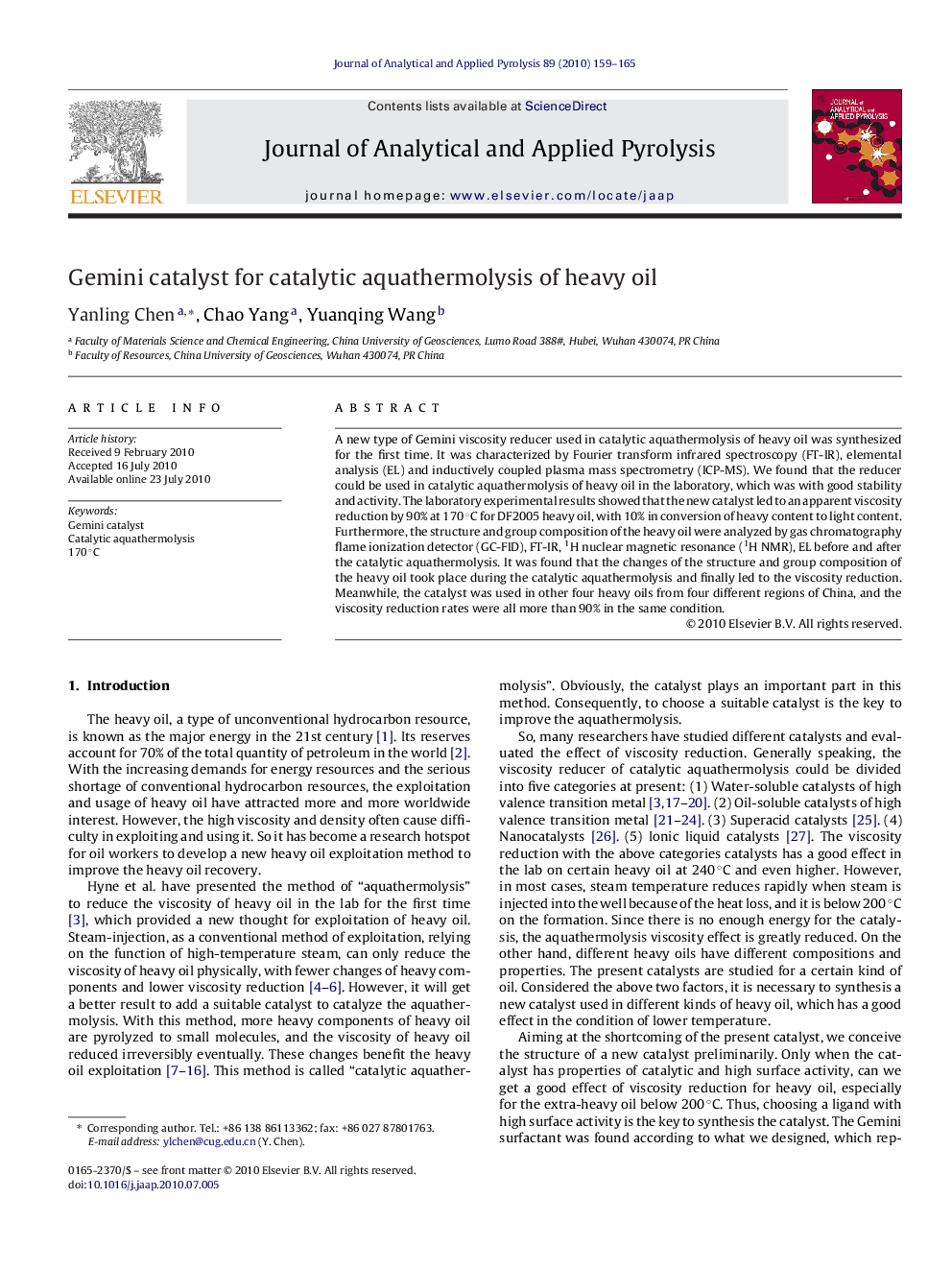| Article ID | Journal | Published Year | Pages | File Type |
|---|---|---|---|---|
| 1197626 | Journal of Analytical and Applied Pyrolysis | 2010 | 7 Pages |
A new type of Gemini viscosity reducer used in catalytic aquathermolysis of heavy oil was synthesized for the first time. It was characterized by Fourier transform infrared spectroscopy (FT-IR), elemental analysis (EL) and inductively coupled plasma mass spectrometry (ICP-MS). We found that the reducer could be used in catalytic aquathermolysis of heavy oil in the laboratory, which was with good stability and activity. The laboratory experimental results showed that the new catalyst led to an apparent viscosity reduction by 90% at 170 °C for DF2005 heavy oil, with 10% in conversion of heavy content to light content. Furthermore, the structure and group composition of the heavy oil were analyzed by gas chromatography flame ionization detector (GC-FID), FT-IR, 1H nuclear magnetic resonance (1H NMR), EL before and after the catalytic aquathermolysis. It was found that the changes of the structure and group composition of the heavy oil took place during the catalytic aquathermolysis and finally led to the viscosity reduction. Meanwhile, the catalyst was used in other four heavy oils from four different regions of China, and the viscosity reduction rates were all more than 90% in the same condition.
